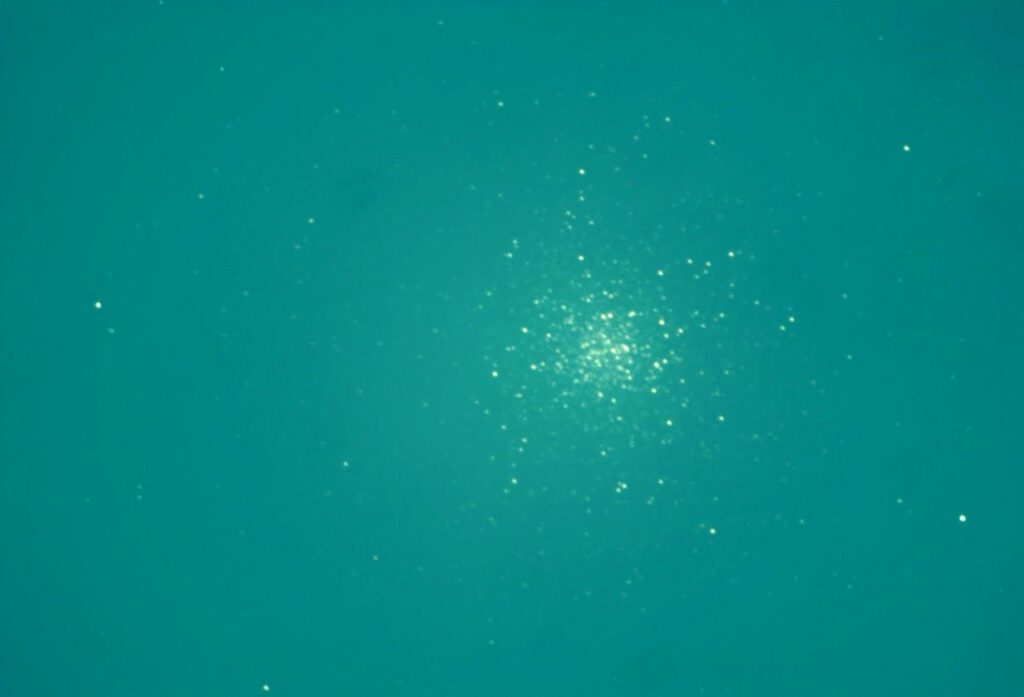Target: M13 – The Great Hercules Cluster
Date & Time: May 8, 2025 @ 9:00 PM PDT
Location: El Camino College Observatory
🧪 Imaging Setup
- Telescope: Celestron C11 Schmidt-Cassegrain
- Aperture / Focal Ratio: 280mm / f/10
- Camera: ZWO ASI294MC (Color CMOS)
- Capture Software: SharpCap
- Total Integration Time:15 minutes
- Frames: 15 × 60-second exposures
- Gain: 117
- Color Space: RGB24
- Output Format: FITS
- Tracking: [Add autoguiding/mount if known]
📌 Target Information: M13 (NGC 6205)
- Object Type: Globular Cluster
- Constellation: Hercules
- Right Ascension: 16h 41m 41s
- Declination: +36° 27′ 37″
- Distance: ~22,200 light-years
- Apparent Magnitude: 5.8
- Apparent Size: ~20 arcminutes
- Star Count: ~300,000 stars
- Estimated Age: ~11.7 billion years
🌌 Visual & Photometric Notes
- M13 appears as a bright, densely packed core with a wide halo of increasingly sparse stars.
- The contrast between the tight spherical center and diffuse outer halo is visually striking and clear in your image.
- Post-processing effectively reduced background blue hue, allowing resolution of individual peripheral stars.
- At this scale and exposure, internal structure and density gradients of the cluster are well represented.
🧭 Scientific Relevance
- M13 is a benchmark for globular cluster morphology, often used in comparisons for core collapse and age modeling.
- Your C11/ASI294MC setup provides a balance of resolution and field coverage, ideal for imaging globulars.
- If overlaid with Gaia DR3 proper motion vectors, the structure of dynamical relaxation can be visualized.
- A well-known star chain (“The Propeller”) in the upper region of M13 may be barely resolvable under these seeing conditions.
🧬 Historical Significance
- Discovered by Edmond Halley in 1714.
- Charles Messier cataloged it as M13 in 1764.
- In 1974, the Arecibo Message (first radio message sent to space) was aimed at M13 due to its high star density.
🛠 Processing Notes & Recommendations
- At f/10, this image demonstrates excellent detail in the core region.
- A future capture at f/6.3 with a focal reducer could help include the full halo and improve signal-to-noise.
- Consider building an M3-M5-M13 comparative luminosity profile using calibrated photometric stacking in future sessions.
📁 Image Reference
